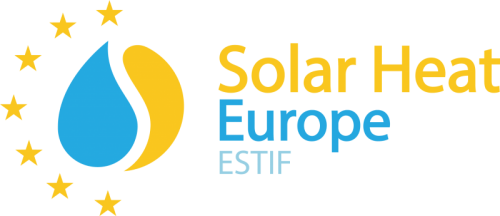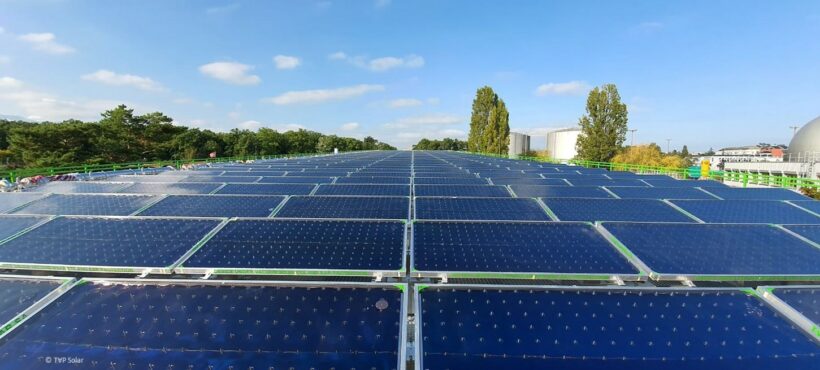An editorial by Guglielmo Cioni, President of Solar Heat Europe
Tripling the contribution of solar thermal by 2030, in Italy for example, would be feasible but requires planning, integration with other sources, and mobilisation of investments. In essence, an industrial plan.
Italy’s National Energy and Climate Plan (PNIEC – Italian abbreviation) has been presented and is defined by the government as “realistic.” I want to be optimistic and interpret this definition as “achievable,” both in terms of timeline and numbers. The truly important thing is not whether the plan is ambitious or meets the expectations of climate advocacy organisations or its opponents. Publishing objectives and deadlines becomes meaningless if they are perceived as empty rhetoric, lacking the necessary commitment and binding nature from our country.
Let’s consider for a moment the impact that the implementation of the PNIEC would have on investment decisions in a sector like solar thermal, to which I belong both as the President of the European industry association and as a manager of a collector manufacturing company that has invested over 100 million euros, mostly in Italy, in its production unit in Avellino, employing about 150 highly qualified people.
The PNIEC targets for solar heat aim to increase energy production from 247 ktep to 829 ktep by 2030. But we prefer to use international units of measurement, so we say we want to increase from 2.8 TWhth to 9.6 TWhth. In terms of collectors installed, this means adding approximately 13 million square meters of solar collectors to the currently installed capacity. All of this in 9 years!
In order to triple the energy production capacity and make a significant and lasting contribution to both decarbonisation and energy security of the country. No one would be happier than us to achieve this. It is possible, and we are ready to take on the challenge. The solar thermal sector has demonstrated its ability to respond to market demand. In Italy, thanks to measures such as Ecobonus and Superbonus, as well as the Thermal Account, the market has grown by 43% (around 330,000 m2) in 2022 alone.
Tripling by 2030 is an achievable goal, but it requires significant efforts from the sector in terms of productive investments, expansion, and establishing a network of installers and maintainers, as well as commercial distribution. Therefore, a sector-specific industrial plan is needed for solar thermal and each of its stakeholders.
Just like with renewable electricity, solar thermal also needs certainty to initiate investments and secure the necessary financing, both commercial and subsidized. Unlike solar photovoltaic and wind power, which heavily rely on Chinese manufacturers, solar thermal relies on an almost entirely Italian and European supply chain. It would be beneficial and necessary to rely on rapid but stable market growth. The PNIEC presents interesting prospects that will only become reality if they are supported by measures to assist end-users and clear regulations that make the final investments in renewable heat technology and systems necessary and urgent.
The potential of solar in Italy is huge, as demonstrated by the development of photovoltaics and the additional push projected by the PNIEC. Solar thermal has the same potential, both for small-scale applications such as residential hot water and in the largely unexplored field of large-scale systems for district heating and industrial process heat. Developing large-scale projects is time-consuming and costly, and we already see that without a rapid adaptation of the network infrastructure, many large wind and solar investments risk remaining on paper for too long.
On the other hand, solar thermal and renewable heating solutions in general, are off-grid, as they serve individual users or a district heating network, so they do not require new infrastructure. With their local heat generation, they contribute to alleviating the burden on the grid and reducing the need for the transportation and distribution of electricity, which will already be under immense pressure to meet the additional demands of mobility, cooling, and the share of heating we aim to electrify.
The PNIEC recognises the need to introduce a range of new solutions into the energy mix, especially in the heating and cooling sector, including some already available (geothermal, heat pumps, biofuels), and others that are more long-term (and more uncertain), such as hydrogen. We may agree or disagree on the weight assigned to different technologies, but on one thing, we must absolutely agree: the absolute necessity of urgently starting the work to make the prospects of decarbonisation presented to us a reality.
Furthermore, the integration of local sources such as geothermal and solar thermal, with grid energy through heat pumps and biofuels, is a crucial issue that needs to be addressed through a study and analysis of the needs of each individual user, creating a significant market for energy consulting companies. This work has already begun and is the expertise of designers and developers who will have the task of facilitating the adoption of new hybrid and integrated solutions by end-users. The goal must be to not disrupt the habits of users, both residential and industrial, in accessing energy, while also avoiding cost increases.
Every day spent discussing ambitions and adequacy of measures is a day wasted in achieving results, a day of delay compared to the deadlines imposed by the absolute need to proceed with the energy transition. Each delay will result in greater impacts of climate change, missed investment opportunities, and job creation for all those who will operate and commit themselves in the next two decades to build the new global, European, and Italian energy infrastructure.
We have already spent over fifty years on delaying tactics and denial, sterile debates, and triumphant announcements of grand objectives, and we are far behind where we need to be to address the climate crisis successfully. Climate change is the global crisis of the millennium, and it certainly won’t wait while we hesitate. As Churchill said, “We are entering an age of consequences,” and in these times, we want to see action more than debate.
The solar thermal industry, with its associated sectors, is eager to grow and occupy the energy market space that will be freed up with the energy transition. The industry is also reorganising its Italian association, Solterm Italia, which will be established soon and will involve national and international manufacturers. We are ready to collaborate with institutions and major energy and heat actors in Italy and Europe to accelerate the adoption of solar thermal systems, develop quality and performance standards, launch projects, and build a new and reliable energy infrastructure.
We need incentives and regulations with clear timelines to initiate the development of large-scale projects with partners and end-users who are fully aware that they have no other choice but to start changing their current paradigms and business models.
In summary, we need to plan and mobilise investments. The fewer risks, uncertainties, and bureaucracy we face along the way, the faster and more effective the execution of the plan will be.
The original editorial drafted for Qualenergia (IT), can be accessed here.


Leave a Reply